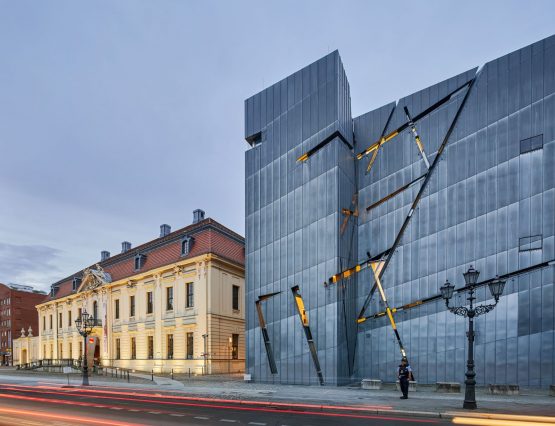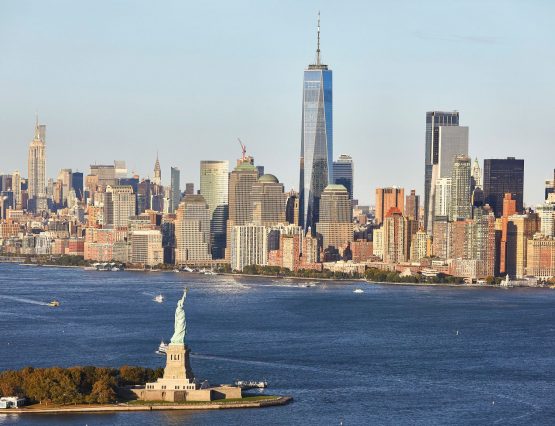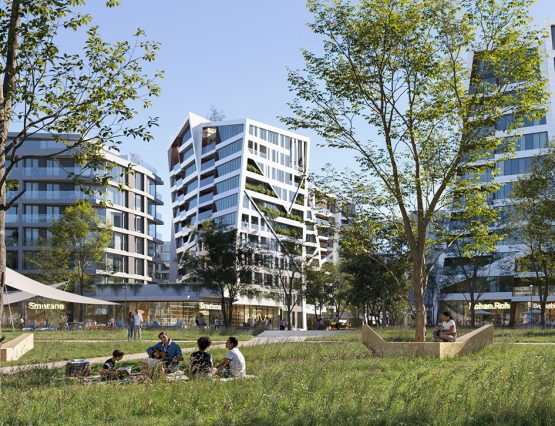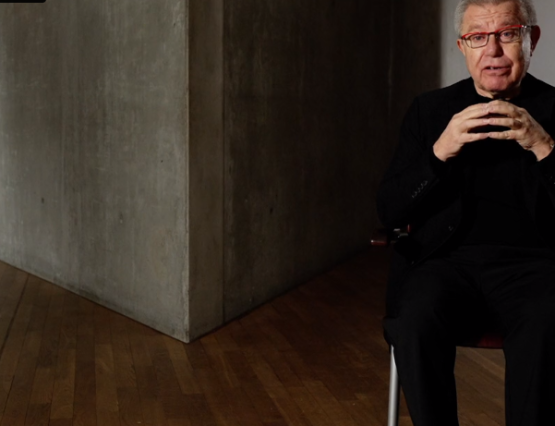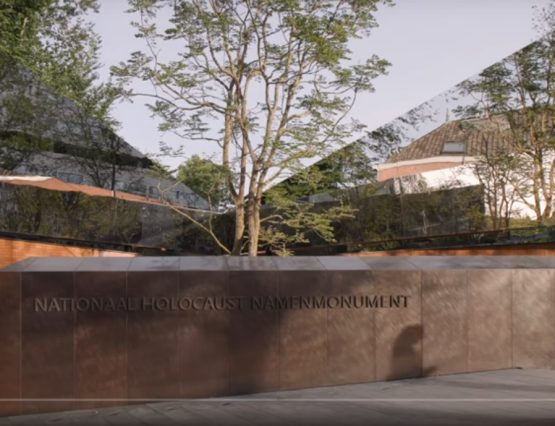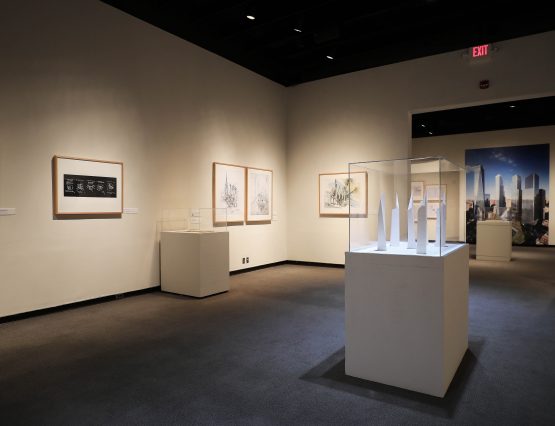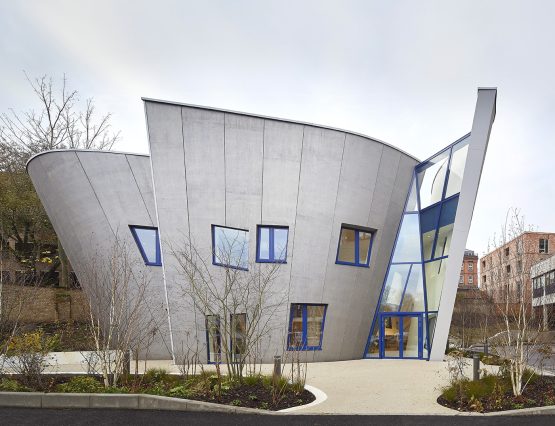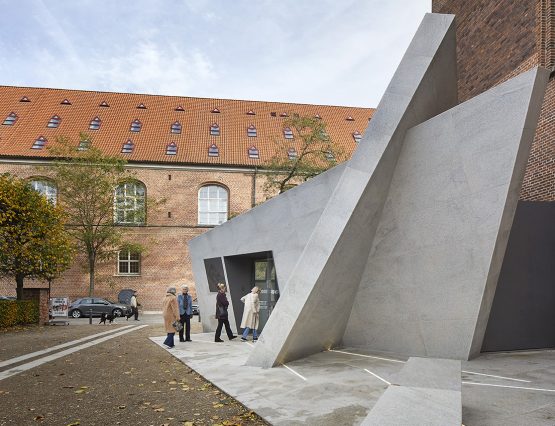Jewish Museum Berlin
The Jewish Museum Berlin, which opened to the public in 2001, exhibits the social, political and cultural history of the Jews in Germany from the fourth century to the present, explicitly presenting and integrating, for the first time in postwar Germany, the repercussions of the Holocaust. The new building is housed next to the site of the original Prussian Court of Justice building which was completed in 1735 now serves as the entrance to the new building.
Daniel Libeskind’s design, which was created a year before the Berlin Wall came down, was based on three insights: it is impossible to understand the history of Berlin without understanding the enormous contributions made by its Jewish citizens; the meaning of the Holocaust must be integrated into the consciousness and memory of the city of Berlin; and, finally, for its future, the City of Berlin and the country of Germany must acknowledge the erasure of Jewish life in its history.
The visitor enters the Baroque Kollegienhaus and then descends by stairway through the dramatic Entry Void, into the underground. The existing building is tied to the new extension, through the underground, thus preserving the contradictory autonomy of both the old and new structures on the surface. The descent leads to three underground axial routes, each of which tells a different story. The first leads to a dead end – the Holocaust Tower. The second leads out of the building and into the Garden of Exile and Emigration, remembering those who were forced to leave Berlin The third and longest, traces a path leading to the Stair of Continuity, then up to the exhibition spaces of the museum, emphasizing the continuum of history.
A Void cuts through the zigzagging plan of the new building and creates a space that embodies absence. It is a straight line whose impenetrability becomes the central focus around which exhibitions are organized. In order to move from one side of the museum to the other, visitors must cross one of the 60 bridges that open onto this void.
AWARDS
2010 – Buber-Rosenzweig Medal from DKR (German Coordinating Council of Societies for Christian-Jewish Cooperation)
1999 – The German Architecture Prize
1998 – The Best of 1998 – Art forum International
More about this project
World Trade Center Master Plan
In 2002, the Lower Manhattan Development Corporation (LMDC) launched an international competition to redevelop the 16 acres in Lower Manhattan devastated by the terrorist attacks of September 11. Studio Libeskind’s proposal, Memory Foundations, was selected as the winning master plan.
In developing the design, Daniel Libeskind worked closely with stakeholders, survivors, and the public—recognizing that the challenge was not simply architectural but deeply human. The plan sought to balance remembrance with renewal, preserving the memory of the tragedy while restoring vitality to one of New York’s most significant neighborhoods.
At the heart of the concept is openness, light, and memory. The center of the site remains unbuilt—a space of illumination and reflection that anchors the entire plan. Water was incorporated into the memorial to create a contemplative atmosphere, softening the sounds of the city and preserving the original footprints of the Twin Towers as sacred voids.
Surrounding towers were positioned along the site’s perimeter, their footprints minimized to reduce shadows and maintain sunlight across the plaza. This configuration established an open, luminous landscape where visitors navigate by light rather than walls. The towers rise in a spiral within the restored street grid, culminating in One World Trade Center—a 1,776-foot-high symbol of freedom that recalls the year of American independence and echoes the torch of the Statue of Liberty.
A defining feature of the plan is the “wedge of light” on the eastern edge of the site, carefully aligned so that each September 11, sunlight illuminates the memorial plaza between 8:46 a.m. and 10:28 a.m.—the precise times when the Twin Towers were struck and fell. This celestial alignment transforms the site into a living monument: a calendar of light, a civic axis of remembrance, and a beacon of renewal.
The plan also called for the exposure and preservation of the original slurry wall—the massive retaining structure that held back the waters of the Hudson River. Incorporated into the 9/11 Memorial Museum and the PATH station, it stands as a powerful symbol of endurance and the human spirit, grounding the project both literally and emotionally in the city’s bedrock.
More than a master plan, Memory Foundations represents an act of collective remembrance—an urban framework where the rebirth of Lower Manhattan is guided not only by architecture, but by light, time, and the enduring presence of memory itself.
AWARDS
2018 – CTBUH Urban Habitat Award
2012 – AIA National Service Medal
2004 – Best of New York Award, for the ‘Building of New York’, Hosted by the New York City College of Technology Foundation, New York, USA
Sekyra Flowers
Sekyra Flowers, designed by Studio Libeskind in collaboration MS Architekti (Prague) and with developed by Sekyra Group, will be the centerpiece of Rohan City—Prague’s bold new urban district on the banks of the Vltava River.
This landmark project features four sculptural residential towers offering around 500 apartments, framed by a vibrant new public square dedicated to philosopher Simone Weil. Inspired by blossoms in bloom, each tower rises in shimmering metallic segments with green roofs and terraces that blend city living with nature. At street level, cafés, shops, and leisure venues will bring life to the pedestrian pathways, connecting seamlessly to bike trails and park spaces.Transforming a 21-hectare brownfield site, Rohan City is envisioned as Prague’s new green heart, where nearly half the area is devoted to parks and public spaces.
In keeping with its cultural mission, Rohan City will feature streets, parks, and squares named after prominent Czech and international philosophers, making it the first “Neighbourhood of Philosophers” in Europe. Plans also include a National Centre for Reading Culture, envisioned as part of Libeskind’s master plan.
When completed by 2035, Rohan City will provide homes and workplaces for 11,000 people, representing an investment of over 30 billion CZK—a vibrant new symbol of modern Prague.
More about this projectFan d’Issy Mixed-Use
Studio Libeskind, in collaboration with La Compagnie de Phalsbourg, is designing the flagship building for the Léon Blum district, adjacent to the future Line 15 of the Grand Paris Express. Issy-les-Moulineaux is transforming remarkably, positioning itself at the forefront of urban development. Central to this change is Issy station, which will soon be connected to the Grand Paris Express, catalyzing growth. This significant infrastructure project aims to enhance mobility for residents and workers, reflecting the City’s commitment to ambitious and sustainable urban planning.
The project features a mixed-use program covering more than 20,000 square meters, including a hotel, retail, office, and residential, a third of which will be social housing. Fan d’Issy will have a geometric shape with expansive green walls and slanted facade elements that appear to fan out. It was designed to be a landmark building in the ZAC Léon Blum eco-district, which is currently under development. Construction on the building will commence after the completion of the adjacent Issy station, which will serve the new Line 15 of the Grand Paris Express metro.
More about this projectAlbert Einstein Discovery Center
The Albert Einstein Discovery Center in Ulm is set to become a groundbreaking public institution celebrating Einstein’s unparalleled contributions to science, technology, pacifism, humanism, and international understanding. This immersive experience will bring his legacy to life through modern, interactive, and multimedia exhibits that invite visitors to explore his genius from every angle.
The center will showcase Einstein’s life and work in connection with Ulm’s history, demonstrate how his theories shape current technologies, and present hands-on experiments at a cutting-edge Science Center. Workshops, lectures, and experiential exhibits will highlight not only his scientific achievements but also his profound humanity and universal values. The bold design echoes the essence of Einstein’s physical theories with its flowing, curved lines. The building is anchored by the concept of a “saddle point” – a geometric form that is minimized in one direction and maximized in another – allowing the structure to organically connect with its surroundings.
The center’s dimensions are as impressive as its purpose. With a total floor area of 7,800 square meters spread across five levels, a height of 50 meters, and underground technical and parking facilities, the building makes optimal use of the site. Located at the former headquarters of Stadtwerke Ulm/Neu-Ulm (SWU), this landmark will transform the cityscape while honoring the birthplace of the world’s most famous scientist.
More about this project
RAI TV Daniel Libeskind at the Jewish Museum Berlin
Daniel Libeskind is interviewed in the Jewish Museum Berlin for Holocaust Remembrance Day. Film by Antonello Savoca/ Rai
More about this articleA short film on the Dutch Holocaust Memorial of Names
A video tour through the Dutch Holocaust Memorial of Names
More about this articleDreams of Freedom. Romanticism in Germany and Russia
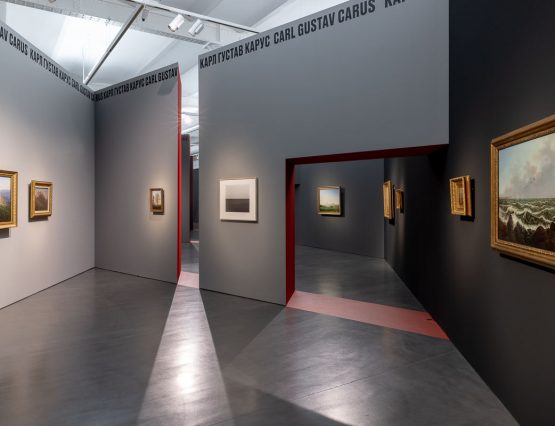
Studio Libeskind was engaged by the organizers to create an exhibition design for the exhibition “Dreams of Freedom. Romanticism in Germany and Russia” that will be at the Tretyakoy Gallery in Moscow and the … in Dresden, Germany, respectively. The design by Architect Daniel Libeskind is a response to the masterpieces of works by the greatest artists of the first quarter of the 19th century: Caspar David Friedrich, Philipp Otto Runge, Johann Overbeck, Alexander Ivanov, Alexei Venetsianov, Orest Kiprensky, Karl Bryullov and others. A key idea was to create a space that will give a visceral sense of the Romantic artists and their quests through the way a visitor moves through the space.
As visitors enter the galleries, they embark on a journey through two interlaced spirals that create a series of oblique and intimate gallery spaces within the labyrinth. Libeskind envisioned an imaginary line between Dresden and Moscow to create a coordinated system of axes that gives the visitor a compass to orient themselves between the two cities—as well as between two analogous states of mind. The visitor has both clarity and uncertainty in navigating the exhibits, echoing the power and dynamism of Romanticism. Red passageways, black and grey blocks of color, and bold graphic lettering on the walls create a dramatic series of gallery spaces that guide and inform the visitor through the exhibition.
Visitors will encounter more than 350 works of art, including approximately 200 paintings, supplemented by archival materials and unique exhibits from dozens of German and Russian collections.
The exposition was developed by experts from the Tretyakov Gallery and Dresden museums and will be displayed in two installations, one in Moscow and the other in Dresden.
Tretyakov Gallery in Moscow, Russia: April 23, 2021 to August 8, 2021
Albertium at the SK Museum in Dresden, Germany: October 2, 2021 to February 6, 2022
Studio Weil: A Discussion on Design Inspiration
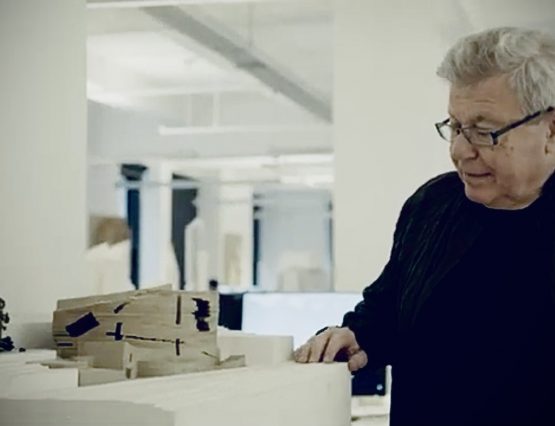
Architect Daniel Libeskind talks about his design for the Studio Weil building in Mallorca, Spain. The project was completed in 2003.
See more here: Studio Weil
Forever Marked by the Day, Muscarelle Musuem of Art
The new World Trade Center is a space of remembering and healing, as well as a tribute to life and art. This place serves as a memorial designed to honor people and commemorate heroes and connects the past and the future to the present through architecture. The buildings and spaces designed by Daniel Libeskind, Michael Arad, David Childs, and Santiago Calatrava function as channels to find new purpose and peace after the attacks on September 11, 2001. Forever Marked by the Day pays homage to those architects, artists, designers, and photographers who made creativity triumph over destruction.
Daniel Libeskind Tries His Hand at Affordable Housing
Architecture critic Justin Davidson reviews the affordable housing project, The Atrium in Bedford-Stuyvesant, for New York Magazine’s Curbed.
“With the Atrium, Libeskind has given vulnerable people a place they can gradually make their own. He has also demonstrated that the daunting list of rules, requirements, prohibitions, and economic strictures that govern affordable housing in New York don’t have to choke off inventive architecture. The firms with experience negotiating those constraints don’t generally indulge in innovation, and those that prize capital-A Architecture avoid the long and frustrating gauntlet of New York’s housing bureaucracy. Getting this project finished — assembling the team, winning the job, completing the design, gathering the funding, and finally putting up the building — took seven years.”
More about this article
BBC Radio: In the Studio
Daniel Libeskind is one of the world’s leading architects. Amongst his many projects, he devised the masterplan for the re-development of Ground Zero in New York and designed the Jewish Museum in Berlin. He tells Samira Ahmed about the Albert Einstein House in Jerusalem, a new building which will house Einstein’s work and belongings, from his favourite novels, his letters as a peace campaigner, to his papers laying out his famous theory of relativity. He also talks Samira through the many other global projects he’s working on, including a museum of anthropology in Iquique, Chile.
Producer: Olivia Skinner
More about this articleArchitectural Digest: Is Daniel Libeskind’s Latest Residential Building a Blueprint for Affordable Housing?

A twisting façade of geometric windows and sharp angles emerges like a beacon in Bed-Stuy, Brooklyn. Located on the campus of New York City Housing Authority’s (NYCHA) Sumner Houses, a 1958 affordable residential development, the building is a bright spot among the unadorned redbrick towers surrounding it. Sumner House Atrium, as it’s called, was designed by Daniel Libeskind and is the new blueprint for affordable housing in New York City.
Studio Libeskind’s sculptural Maggie’s Centre at Royal Free Hospital opens its doors in London
When the architect Charles Jencks’s wife, Maggie, was diagnosed with cancer, he wanted to channel his grief towards something productive that helped others with similar diagnoses. Shortly after, Jencks co-founded a charity, Maggie’s Centre, which sought to provide thoughtful healthcare architecture for cancer patients around the world. Since 1995, luminaries like Zaha Hadid, Steven Holl, Kisho Kurokawa, Richard Rogers, Frank Gehry and others have designed compact treatment facilities for the nonprofit.
More about this articleThe Danish Jewish Museum gets a new, intersectant entrance by Daniel Libeskind
The architecture of entrances rightly empowers the building they perform as portals to—ranging from ornate cathedral doors with gold inlays to a hole in the wall, entrances mark a threshold into spaces and ensuing behaviors. This is an architectural element of visual conjuncture that is perhaps inadvertently overlooked, despite carrying a substantial purpose of shifting perspectives, greeting and welcoming, embodying security, and at the onset, setting a structure’s first impression.
More about this articleDaniel Libeskind
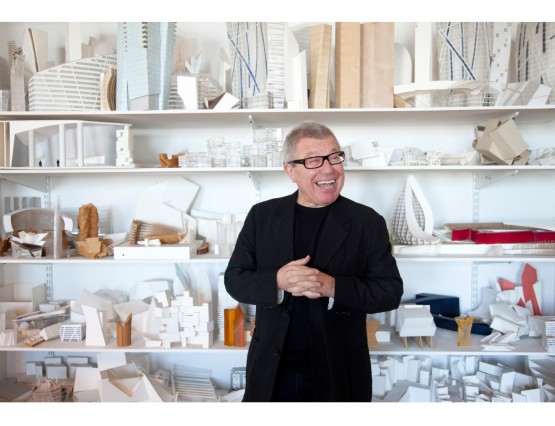
An international figure in architecture and urban design, Daniel Libeskind is renowned for his ability to evoke cultural memory in buildings. Informed by a deep commitment to music, philosophy, literature, and poetry, Mr. Libeskind aims to create resonant, unique, and sustainable architecture.
Born in Lód’z, Poland, in 1946, Mr. Libeskind immigrated to the United States as a teenager and, with his family, settled in the Bronx. He received the American-Israel Cultural Foundation Scholarship and performed as a musical virtuoso, before eventually leaving music to study architecture. He received his professional degree in architecture from the Cooper Union for the Advancement of Science and Art in 1970 and a postgraduate degree in the history and theory of architecture from the School of Comparative Studies at Essex University in England in 1972.
In 1989, Mr. Libeskind won the international competition to build the Jewish Museum in Berlin. He moved his young family to Berlin and devoted more than a decade to the completion of this seminal design. A series of influential museum commissions followed, including the Felix Nussbaum Haus, Osnabrück; Imperial War Museum North, Manchester; Denver Art Museum; Contemporary Jewish Museum, San Francisco; Danish Jewish Museum, Copenhagen; Royal Ontario Museum, Toronto; and the Military History Museum, Dresden.
In 2003, Studio Libeskind won another historic competition—to create a master plan for the rebuilding of the World Trade Center in Lower Manhattan. In addition to a towering spire of 1,776 feet, the Libeskind design study proposed a complex program encompassing a memorial, an underground museum, the integration of the slurry wall, a unique transit hub, and four office towers. This plan is being realized today.
Upon his move to New York, Studio Libeskind quickly became involved with designing and realizing a large number of commercial centers, such as Westside in Bern, the Crystals at City Center in Las Vegas, and Ko-Bogen in Düsseldorf, as well as residential towers in Busan, Singapore, Warsaw, Toronto, Manila, and Sao Paulo.
As Principal Design Architect for Studio Libeskind, Mr. Libeskind speaks widely about the art of architecture at universities and professional summits. His architecture and ideas have been the subject of many articles and exhibitions, influencing architecture and the development of cities and culture. Mr. Libeskind has won dozens of awards for his work, including the Goethe Medal, the Hiroshima Peace Prize, the Dresden Peace Prize, and the European Union Prize for Civil Rights.
Mr. Libeskind lives in New York with his wife and business partner, Nina. He is a licensed architect in the State of New York.
Nina Libeskind
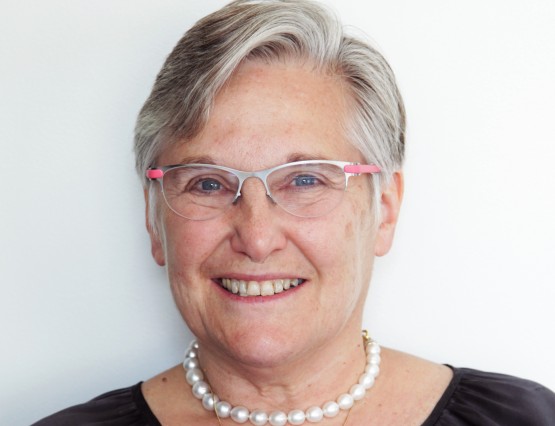
Carla Swickerath
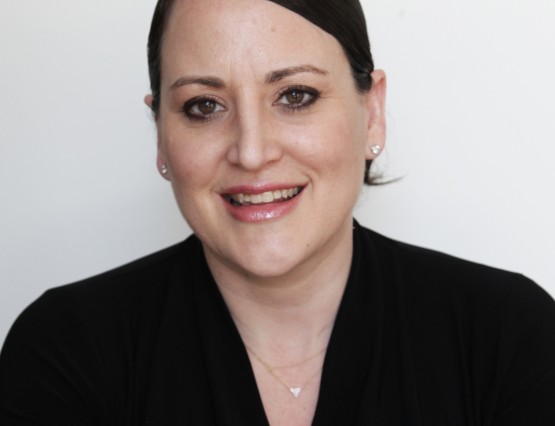
Since joining Studio Libeskind in 1999, Carla Swickerath has gained diverse experience in cultural, civic, retail, commercial, residential, and planning projects around the world. She has led many of the Studio’s successful project teams from concept design through to completion—including the Crystals retail complex at CityCenter in Las Vegas, the Hyundai Haeundae Udong I-Park residential development in Busan, Korea, and the Contemporary Jewish Museum in San Francisco.
Ms. Swickerath has also led the complex World Trade Center redevelopment process from the initial competition phase to the present. Today, her dual management and design skills come into play as she oversees all aspects of operations at Studio Libeskind. Ms. Swickerath leads many of the Studio’s projects, coordinating the design team and consultants, liaising with clients and client representatives, and managing project budgets and schedules.
She earned a Master’s in Architecture from the University of Michigan, following undergraduate studies in English and Art History at the University of Florida. She has taught at the Kunsthochschule Berlin-Weißensee in Berlin and the University of Michigan. Carla speaks publicly on architecture, design, and planning.
Stefan Blach
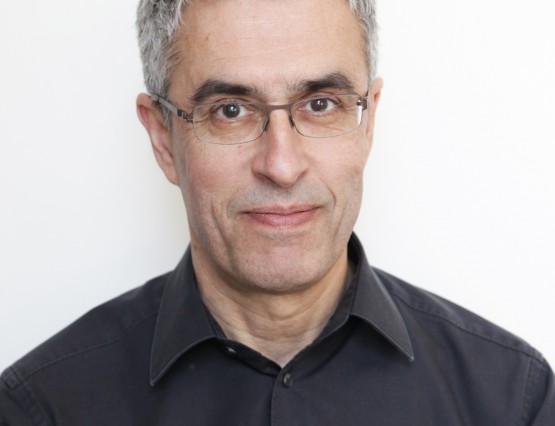
Stefan has over two decades of experience managing some of the Studio’s most complex large-scale projects around the globe. Stefan has led design and consultant teams to reach these goals in various cultural, residential, and commercial developments. This includes the development and completion of the acclaimed Jewish Museum Berlin; the urban rejuvenation development of the Bord Gáis Energy Theatre, and Grand Canal Commercial Development in Dublin; the LEED Platinum certified Kö-Bogen retail and office complex in Dusseldorf, Germany; and the award-winning MO Modern Art Museum in Vilnius, Lithuania.
Stefan looks at each project and reviews the complexity and nuances of the program and site to find creative solutions using simple and practical methods that deliver projects at the highest quality and on budget. He is currently managing the new museum design of the Museo Regional de Tarapacá in Chile, a housing development in Frankfurt, the urban development for the Central Deck and Arena and adjacent mixed-use in Tampere, Finland, as well as several ongoing commercial and cultural projects in Europe and Asia.
Stefan has previous experience working independently with renowned architects such as Tim Heide from Berlin and Salvador Pérez Arroyo from Madrid on projects like the Museo de la Ciencia en Cuenca before joining Studio Libeskind. He obtained a Diploma in Architecture from Technische Universität, Berlin in 1991. Stefan speaks German, and English and is proficient in Spanish.
Yama Karim
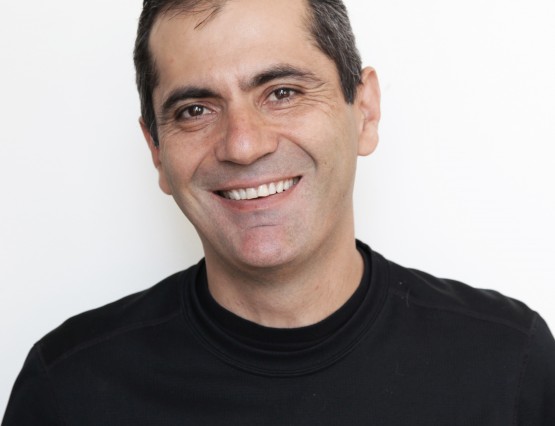
Yama Karim serves as a team leader on many of the Studio’s most complicated large-scale projects including the master plan and redevelopment of the former fairgrounds in Milan, CityLife, which is currently under construction; the World Trade Center masterplan; and Reflections and Corals residential developments in Singapore. He is leading the development of several high-rise towers including the Artery Tower in Vilnius, and the Baccarat Hotel in Dubai, as well as, the Albert Einstein Archives a cultural project in Israel.
Before joining Studio Libeskind’s New York office in 2003, Yama Karim had already collaborated with Daniel Libeskind for several years in the late 1990s in Berlin. He has brought extraordinary experience to the Studio, having served first as a senior designer at Polshek Partnership (now Ennead Architects) where he worked on the Brown Fine Arts Center at Smith College, Massachusetts, and the Sarah Lawrence College Monica A. and Charles A. Heimbold Jr. Visual Arts Center, New York, among others. He also worked at Reiser + Umemoto (RUR) in New York, where he served on the team for the Kaohsiung Port Terminal in Taiwan.
Yama has taught full-time at the Swiss Federal Institute of Technology in Zürich and as a visiting professor at Pratt Institute in Brooklyn. He graduated from Columbia University with a Master in Architecture in 1995 and from the University of California, Berkeley, with a Bachelor of Arts in Environmental Design in 1991. Yama speaks widely on architecture, design, sustainability, and urban planning. Yama speaks English and Farsi.
